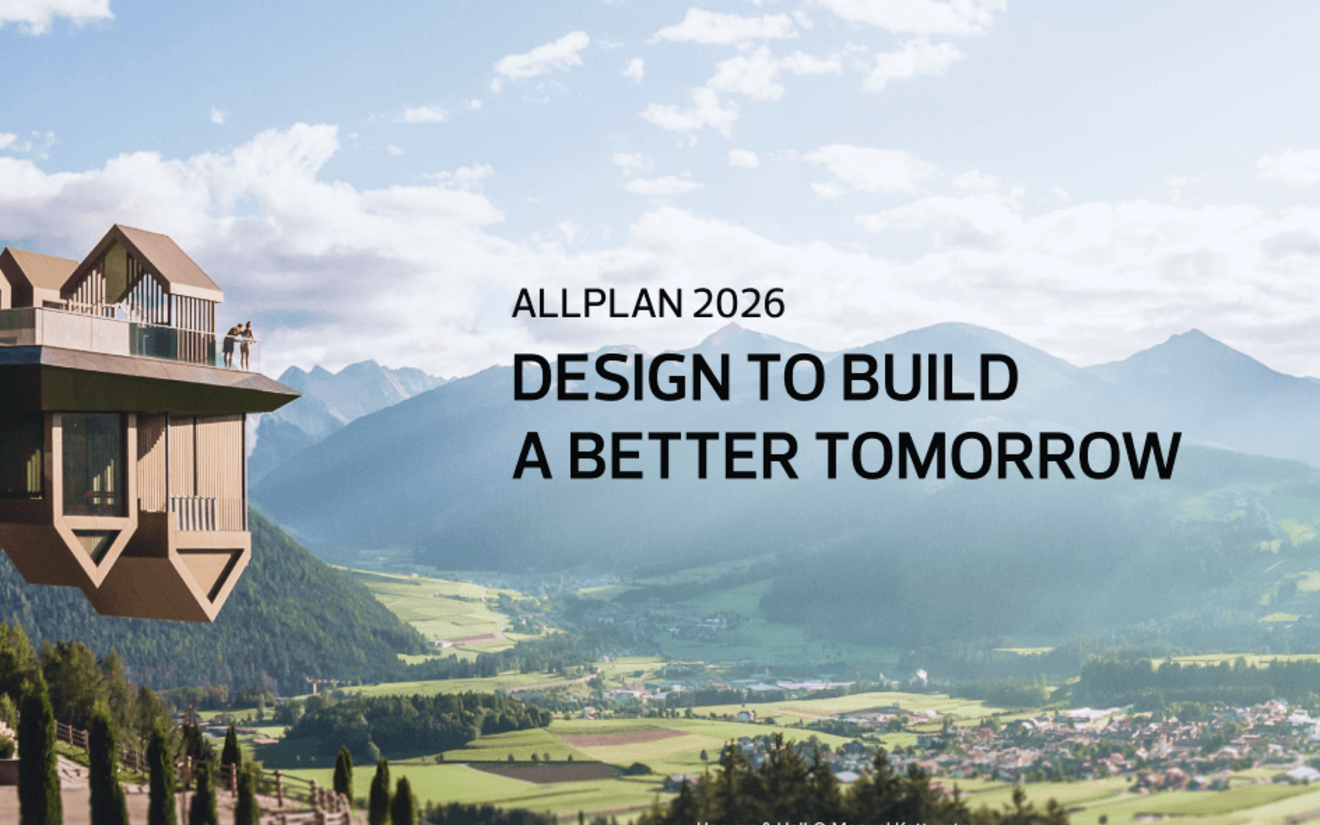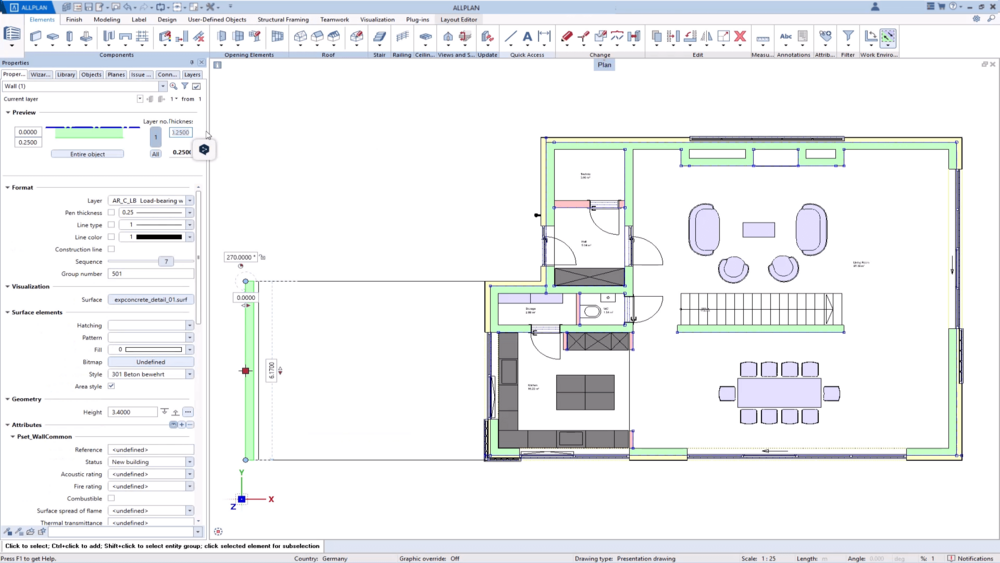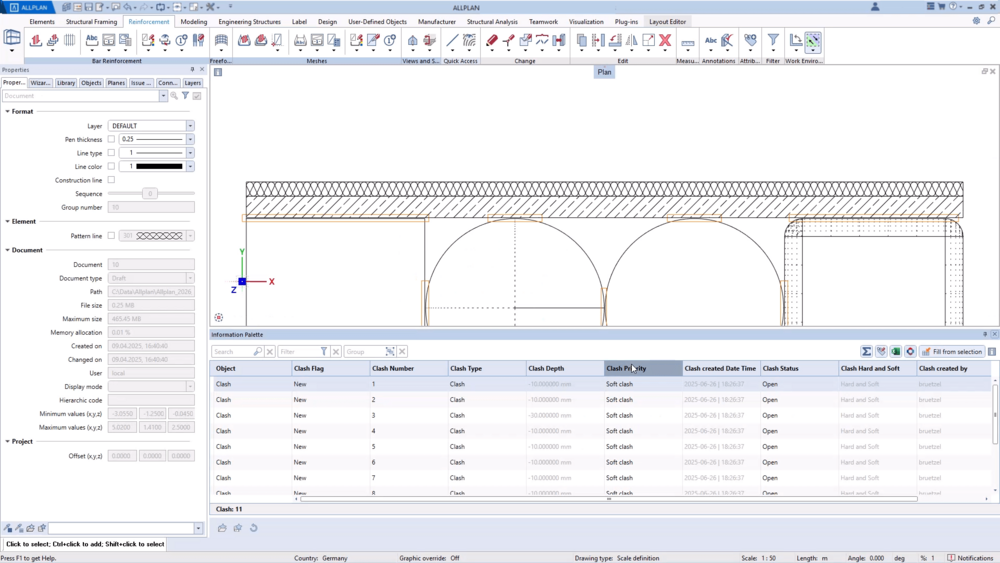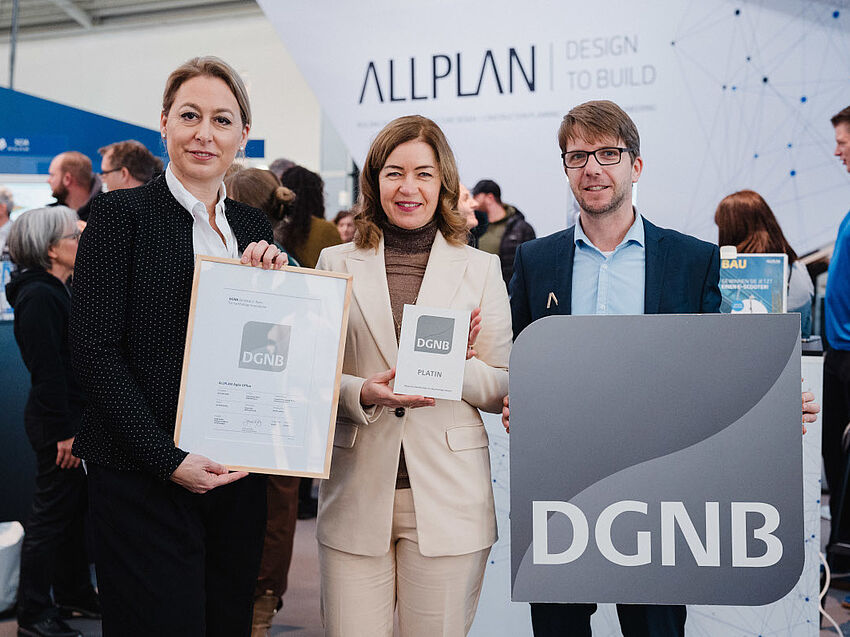From ambitious net-zero targets to stricter regulations and growing client expectations, architects, engineers, and contractors are continuously looking for ways to deliver buildings and infrastructure that minimize carbon, conserve resources, and extend asset lifespans. Yet achieving these goals in practice can be complex, requiring the right insights, tools, and workflows at every stage of the project lifecycle.
ALLPLAN 2026 has been developed with exactly this challenge in mind. The latest release introduces a powerful set of features designed to help project teams embed sustainability into their daily work – without sacrificing efficiency or design freedom. Below, we explore the key sustainability features of ALLPLAN 2026, and how they can help you meet today’s environmental goals.
Smarter Carbon Decisions at Every Stage
Making sustainable choices early in a project is one of the most effective ways to reduce its long-term environmental impact. However, early-stage decisions often need to be made with limited information, making it difficult to balance carbon performance, cost, and design intent.
With ALLPLAN 2026, this challenge is solved through seamless integration with Preoptima CONCEPT. Users can export conceptual massing models directly into Preoptima to perform rapid assessments of embodied, operational, and whole-life carbon. Multiple design variants can be compared side by side, giving architects and engineers the ability to quickly identify the lowest-carbon option without committing to detailed modeling.
This workflow ensures that carbon insights are available from day one, helping project teams avoid costly redesigns further down the line.
Designing for Resource Efficiency
Efficient use of materials is one of the cornerstones of sustainable construction. Over-ordering, design errors, and late-stage changes not only add unnecessary costs but also increase waste and embodied carbon. ALLPLAN 2026 introduces several new features that directly support resource-efficient design and execution.
A key highlight is the advanced multilayer slab and foundation management. With intuitive controls and interactive previews, architects and engineers can model complex assemblies – from subbase layers to terrain adjustments – with precision and consistency. This ensures every material layer is defined accurately, supporting both structural integrity and sustainable use of resources.
ALLPLAN 2026 also enhances customizable quantity take-off, making it easy to generate exact material calculations in the required format. Teams can trust that their bill of materials is accurate, helping them minimize waste and align with procurement requirements.
Combined with rule-based dimensioning and automated reinforcement detailing, these innovations reduce errors, cut rework, and help ensure that projects use only what they need. By streamlining processes and saving hours of manual work, ALLPLAN 2026 delivers both environmental and efficiency benefits.
Renovation and Upgrade Workflows
Extending the life of existing buildings is one of the most sustainable choices project teams can make. Renovation and upgrade projects, however, often involve irregular geometries, complex detailing, and the need for absolute precision.
ALLPLAN 2026 makes this easier with tools such as the freeform stair modeler, multilayer slab management, and BIM-compliant room and finish detailing. These features allow architects and engineers to adapt existing structures quickly and accurately, ensuring new components integrate seamlessly with the old.
By simplifying challenging renovations and upgrades, ALLPLAN 2026 supports a more sustainable approach to the built environment – reducing the need for demolition, conserving resources, and helping project teams achieve higher environmental value with less effort.
Compliance and Data Integrity for Greener Projects
Sustainable construction isn’t just about good design – it’s also about meeting strict data and compliance requirements. ALLPLAN 2026 streamlines this process by embedding sustainability standards directly into BIM workflows.
With buildingSMART Data Dictionary (bSDD) integration, users can access over 300 expert dictionaries, including sustainability-focused standards and national regulations, and apply them directly to objects. Meanwhile, IDS-based attribute import ensures that models automatically meet defined information requirements, reducing manual checks and errors.
Enhanced IFC4/IFC4.3 interoperability further supports openBIM collaboration, giving project teams greater confidence when sharing sustainability data across platforms. Together, these capabilities make compliance faster, more reliable, and integral to the design process – saving time while raising the quality of sustainable outcomes.
Building a Greener Future with ALLPLAN 2026
ALLPLAN 2026 is more than just a productivity upgrade – it’s a step forward in sustainable design and construction. From early-stage carbon optioneering and efficient detailing to automated compliance, the new release empowers project teams to meet today’s environmental goals with confidence.
Ready to build a greener future? See how ALLPLAN 2026 can help you deliver smarter, lower-impact projects from day one.







